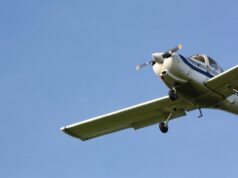
Comparing Parts 121, 135, and 91 operations
As career pilots begin their training, one major question is, what the best, ultimate career path might be. Some know right away what type of flying they want to do, with what company and on what aircraft. But for many, it may be trickier to decide. Let’s consider major differences between Part 121 and 135 flying, as well as Part 91 gigs like instructing.
Part 121 air carriers are perhaps the most visible air operators in the United States. Major airlines like American, Delta, United, and more, operate under this set of regulations. Some may simply assume that these are the natural end goals for a pilot’s career. Indeed, major airlines, ULCCs, and regionals need a significant number of pilots to operate their diverse fleets which may consist of hundreds of aircraft.
A major benefit of flying for these Part 121 airlines is the ability to fly big, fast jets over long distances and into big airports. If you have dreams of regularly flying into LAX, O’Hare, JFK, Dallas-Fort Worth, or Denver International, these airlines will be for you. Plus, you’ll be able to fly big planes – mainline carriers fly anything from the Boeing 737s and Airbus A320s up to the Boeing 747s and Airbus A380s – to either local or far-flung destinations. You ultimately have a wider array of where and what to fly.
However, many argue that this type of flying can become repetitive. Most airlines in the U.S. operate to some degree under the “hub-and-spoke” model, where aircraft always return to a major hub after reaching an outstation. New market entrants like Avelo Airways and Breeze Airlines may offer other options, but many established airlines keep their pilots flying into familiar airports on familiar planes, shuttling passengers back and forth. If this isn’t your style, perhaps there is a better option.
Part 135 airlines may fall into a few different subcategories. Many fly on-demand routes using a variety of aircraft from small piston-engines, general-aviation aircraft to large business jets, sometimes even based on commercial airliners. These flights may be more appealing to people who want a more diverse kind of flying – either with a different type of aircraft, smaller and more unique airports, or a less predictable schedule – or who want to work with a more specific clientele or doing a more specific type of operation.
Some Part 135 operators fly commuter flights on planes with under nine seats or carry no more than 7,500 pounds of cargo. This type of flying might give you some similarities to bigger airlines – the Essential Air Service program, for example, connects large airports to small communities on a regular schedule – but you’ll be able to fly smaller aircraft that may require more involvement to fly when compared to bigger jets that could rely more on autopilots to manage.
Part 135 operators are often smaller than their Part 121 counterparts, giving pilots a sense of community and integration into the company. However, this type of flying might have more unnatural schedules, such as demanding more time on-call and, in some cases, more time away from home at far-flung destinations. Some Part 135 pilots may also work as travel agents and ground crew, in some regard, putting in more effort to organize transportation to get passengers to and from the airports or spending more time flight planning and cleaning their aircraft by hand.
Finally, some pilots may be drawn to fly for Part 91 operators. These operations may include aerial imaging, pipeline patrol, crop dusting, banner towing and more. These types of flying jobs may have the most consistent schedules, as they’re not based around passengers or clients with changing schedules. However, these jobs are often seasonal, so you may not live in the same place for as long as you might otherwise, depending on what type of flying you’re doing. Plus, Part 91 has the least regulations in terms of crew rest, maximum duty times, and more, so be prepared for potentially long days and intense schedules.
There are benefits and drawbacks with each type of flying. No job will be completely perfect, but what you want to do will play into what kinds of flying you enjoy and what you value in a workplace.























































